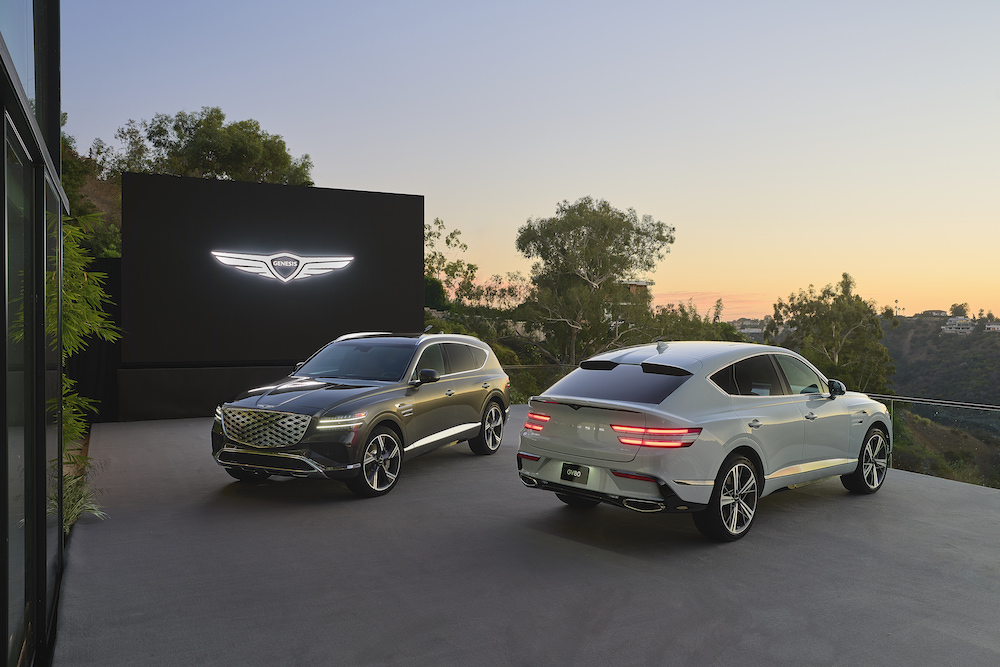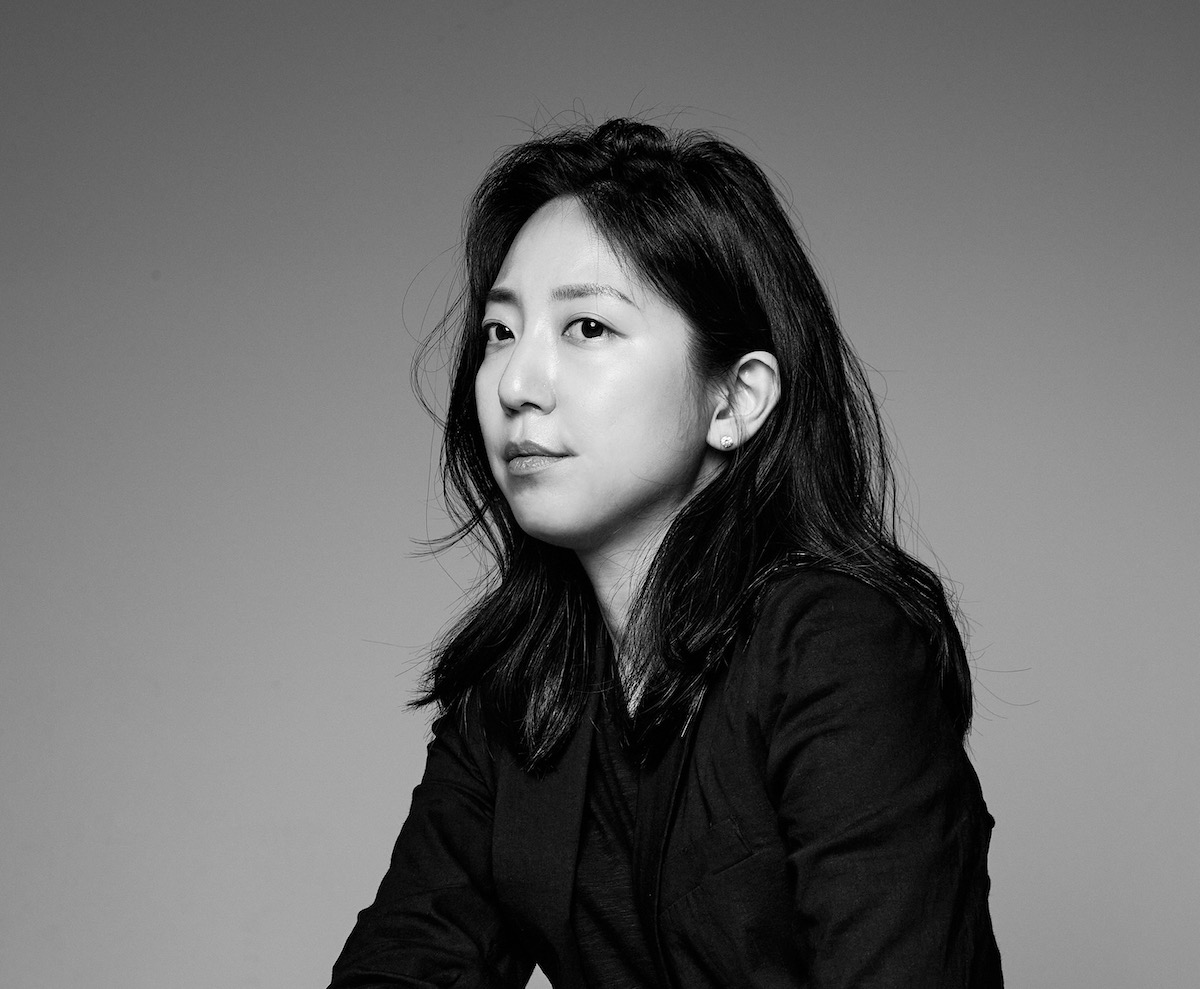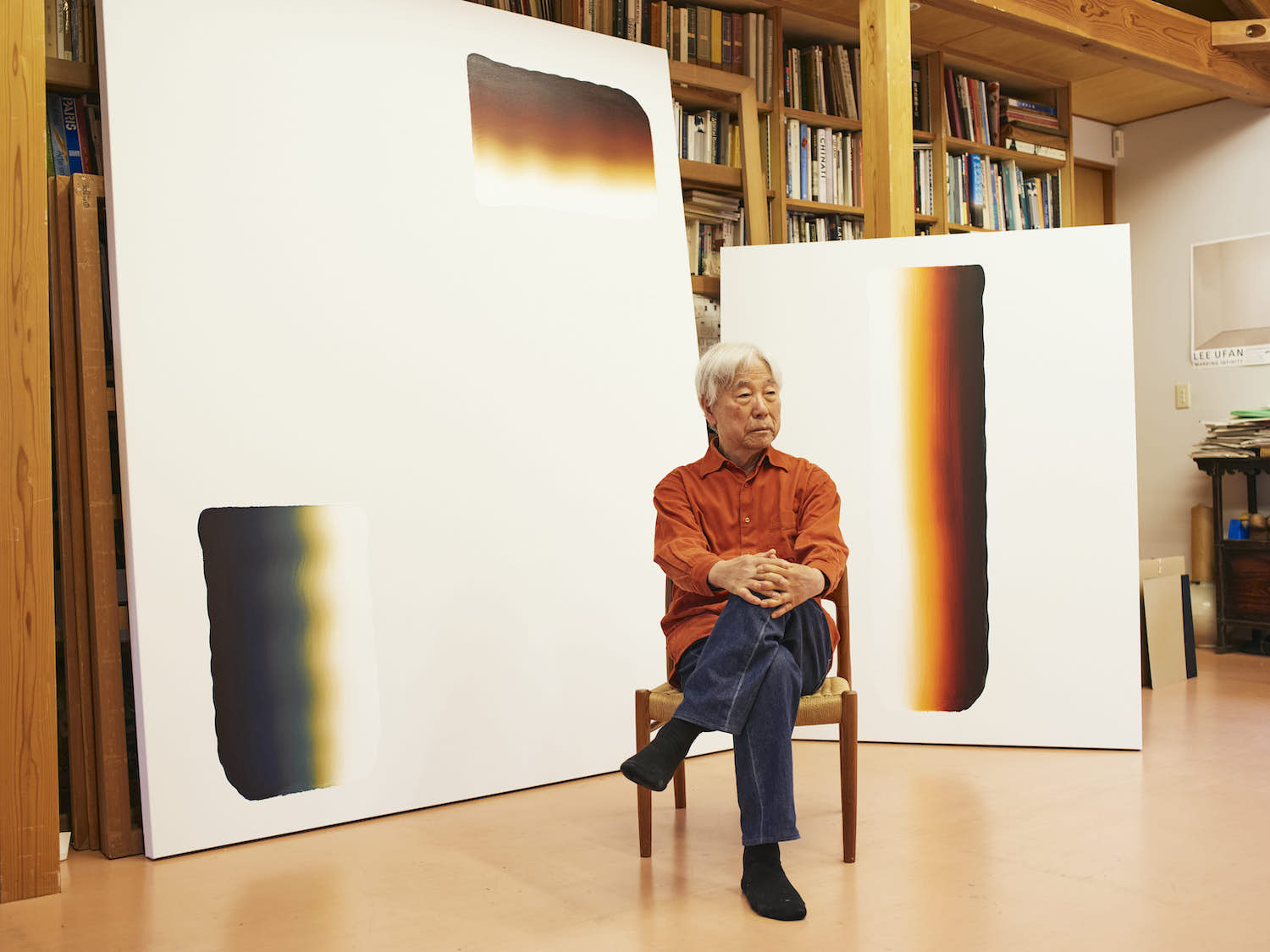It can be a challenge for an architect to pivot between various project types—it’s easy to get typecast as a designer who makes private houses, or public installations, or other civic projects. This is not the case for the Seoul-based architect Yong Ju Lee, who throughout his decade-long career has developed an astounding portfolio of projects across these various sectors. Public parks, a fire station, an art gallery, building facades, and artfully considered architectural installations and pavilions of varying scales comprise some of Lee’s singular oeuvre of completed works.
Equal parts architect, artist, and educator, Lee has honed his craft and continues to push the limits of what he is able to accomplish, both through the materials he selects and the conceptual rigor behind a built entity. In a city where inventiveness and creative ingenuity are celebrated, Lee has created an architectural practice that is both local and global in his outlook on the importance of understanding architecture’s impact on the human condition.
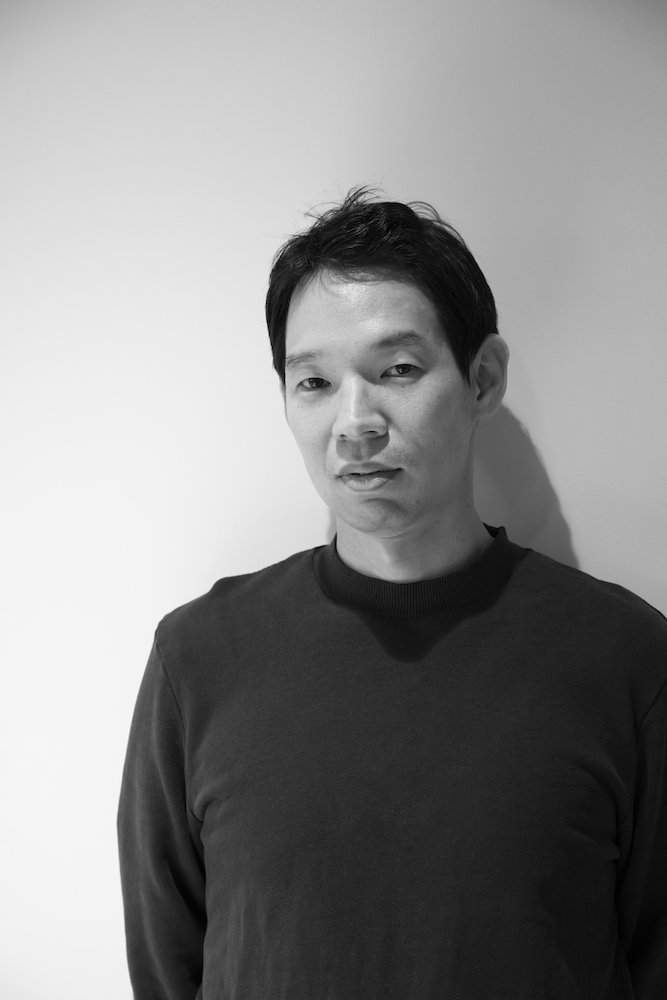 Courtesy of Yong Ju Lee Architecture
Courtesy of Yong Ju Lee Architecture
WHITEWALL: As you enter into your 10th year of operating your firm, what are some of the most significant ways in which your process as a designer has changed over the last decade?
YONG JU LEE: Halfway through my career as a professional architect, the focus was mostly on realizing designs within the given budget. It was about creating a visually appealing outcome with limited resources, considering the choice of materials and construction techniques. However, in the past five years, as I have taken on the roles of a professor and researcher at the same time, I have placed more emphasis on the background of design.
While I still, of course, value the quality of the final output, I find greater significance in the ideal perspective views, particularly in my role as an educator. This can be said of storytelling as design process and contemplating the role that design should play in society.
“I find greater significance in the ideal perspective views, particularly in my role as an educator,” ––Yong Ju Lee
WW: At what point did you decide you wanted to become an architect?
YJL: I always had a desire to become a creator of some sort. I was really passionate about movies, but I lacked the boldness and open-mindedness to pursue a career as a film director. Architecture seemed to be the most similar field to filmmaking and looked like a conventional profession. Additionally, I believed that architecture had a strong aspect of engineering compared to other design fields. To me, this indicated that architecture would have a solid intellectual background in the design process. Now, I believe those thoughts right to some extent. As a creator, I work on realizing things people have never perceived before, much like movies I wanted to make. And I put together all the knowledge from concept to design and construct to get proper outputs.
“As a creator, I work on realizing things people have never perceived before,” ––Yong Ju Lee
 “Decomposition Farm: Stairway,” 2022, Courtesy of Yong Ju Lee Architecture.
“Decomposition Farm: Stairway,” 2022, Courtesy of Yong Ju Lee Architecture.
WW: What ways did your time in New York, while studying at Columbia, influence your approach to the built environment?
YJL: When I enrolled at Columbia University, it was renowned as one of the most radical architecture schools. The faculty comprised many architects and theorists who were dedicated to pushing architectural concepts to their limits, realizing the initial concepts. Even though many of their ideas were just left as concept sketches, how solid and convincingly they presented their ideas still impacts me today. I am not sure what other colleagues studying there think, but for me, treating the design in continuous context was the most important lesson I received, rather than massaging the shape as an isolated volume.
I acquired valuable skills in developing ideas within my mind and translating them into tangible designs for the real world. Sharing ideas through discussion or criticism and expressing my own thoughts on any given issue were another significant lesson there.
When it comes to talking about New York, it was a city where it was okay to do the most bizarre things. There was always someone weirder than me, and there was a mutual respect of indifference towards each other. The emphasis on pushing boundaries and pursuing unconventional approaches encouraged me to think beyond the conventional constraints of architecture. I believe that the way I currently work, which can be described as a method that only architects can do, is something I have learned.
“When it comes to talking about New York, it was a city where it was okay to do the most bizarre things,” ––Yong Ju Lee
 “Decomposition Farm: Stairway,” 2022, Courtesy of Yong Ju Lee Architecture.
“Decomposition Farm: Stairway,” 2022, Courtesy of Yong Ju Lee Architecture.
 “Decomposition Farm: Stairway,” 2022, Courtesy of Yong Ju Lee Architecture.
“Decomposition Farm: Stairway,” 2022, Courtesy of Yong Ju Lee Architecture.
WW: It is remarkable how seamlessly you are able to pivot between the worlds of art, architecture, and academia. It’s something many designers strive for, but you are able to accomplish this in an authentic way.
YJL: Everything is architecture to me. I don’t have a sense of classifying art, architecture, education, and other things. While there are differences in terms of functionality, materials, structure, and their utilization, ultimately, as mentioned before, I believe that in the aspect of the process of materializing ideas, they are all the same. Regardless of the project, I approach it from the perspective of an architect, and I consider everything I create to be architecture. I hope that regardless of the scale or function, people would recognize the results as a reflection of my work, thinking, “This is the outcome because that architect created it.”
WW: A careful examination of material permeates your portfolio of projects. Can you talk about your interest in exploring the possibilities of various building materials in your practice?
YJL: Materiality is essential in architecture. From structural systems to finishes, choosing the right materials is a core task. During design development, I try to set most sequences in a parallel way, rather than linear sequence, in that concept sketch, design, program layout, materiality, construction type, and others are developed simultaneously. In particular, to actualize complex forms intricately designed according to a concept, a material study from the early stages of design is indispensable.
Moreover, environmental problems are another key issue to contemporary designers. As an architect, I am particularly interested in exploring the use of new materials to address the significant proportion of carbon emissions attributed to building construction. With building-related carbon emissions accounting for the highest share in overall emissions, I am trying to mitigate this impact.
“Environmental problems are another key issue to contemporary designers,” ––Yong Ju Lee
 “Decomposition Farm: Stairway,” 2022, Courtesy of Yong Ju Lee Architecture.
“Decomposition Farm: Stairway,” 2022, Courtesy of Yong Ju Lee Architecture.
WW: Your 2018 public project in Seoul, Root Bench, became an international sensation, garnering coverage from a wide range of media outlets. Were you anticipating or hoping for this reception as you were conceiving of this project?
YJL: Of course, I didn’t expect to experience this sensation while working on the project. It was a relatively simple project. A public organization from Seoul City approached me, asking if I could reinterpret and realize one of the winning proposals from a public sketch competition. I chose the clearest idea with broad coverage, titled “Tree Root Bench,” submitted by a teenager. The description depicted an undulating radial bench resembling organic roots, with a tree at the center. I spent only a few days developing the idea by adapting an existing algorithm from the “reaction diffusion system” that I was already working on for another project. The tree part was removed during the design phase, and all the decisions were made swiftly.
People sometimes say my projects are too complicated to understand, but Root Bench is not. That might be because it was originally from others’ thoughts, which is properly well balanced with my design approach.
WW: Many architects dream of having the opportunity to complete public work, and share their abilities as designers with a wider audience. How have these opportunities to create public spaces shaped your process as an architect?
YJL: I don’t know why, but I have not had that many private clients since the beginning of my career. I have just tried what I could do, and they were mostly public installations and competitions. Architecture is always for the public regarding its scale and its position in the context.
Unfortunately, even when people are experiencing architecture every day, they do not perceive it. People think of a luxurious house, fancy interior, or real estate as architecture. Expanding the boundaries through art, this tendency becomes even more pronounced. But architecture and art are everywhere. I aim to awaken people’s interests in the spatial value all around them. I wish individuals can experience unusual refreshment in their routines through my works, even if it’s for a short moment.
“Architecture and art are everywhere,” ––Yong Ju Lee
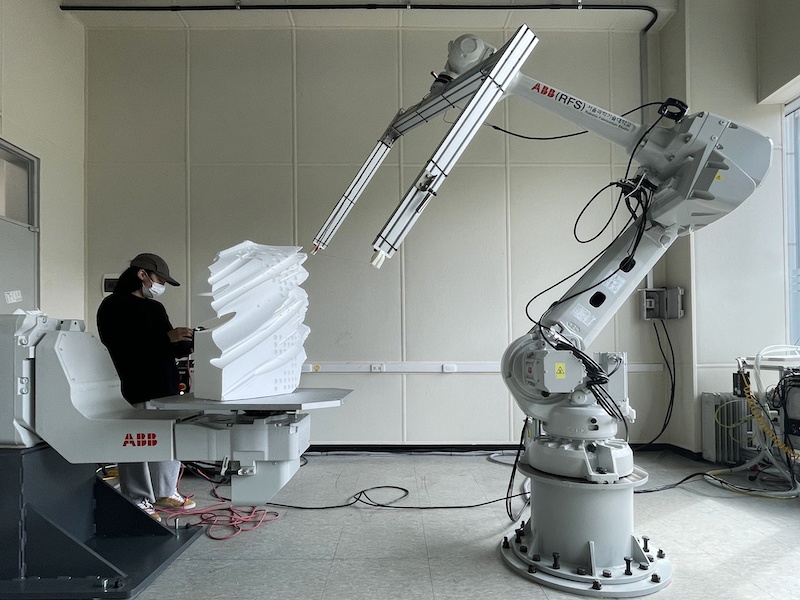 Courtesy of Yong Ju Lee Architecture.
Courtesy of Yong Ju Lee Architecture.
WW: What projects are you working on currently?
YJL: Public installations and exhibitions like the Root Bench are always ongoing, ranging from permanent to temporary ones. As a researcher, I also lead the robotic fabrication studio at the university, which involves some digital fabrication projects. As mentioned earlier, I recently have had an interest in new composites as architectural materials for sustainability. Mycelium from a fungus is getting popular in the design field now. I also have been looking up mycelium for application to a sustainable building material. It is just a beginning stage as a project, but I am trying to 3D-print mycelium eventually on a large scale. It will take time to find proper viscosity and develop a pressing machine. Designing overall shape and toolpath for the robotic arm are another challenge for the next step. I am constantly working on presenting various perspectives of architecture to the public.








